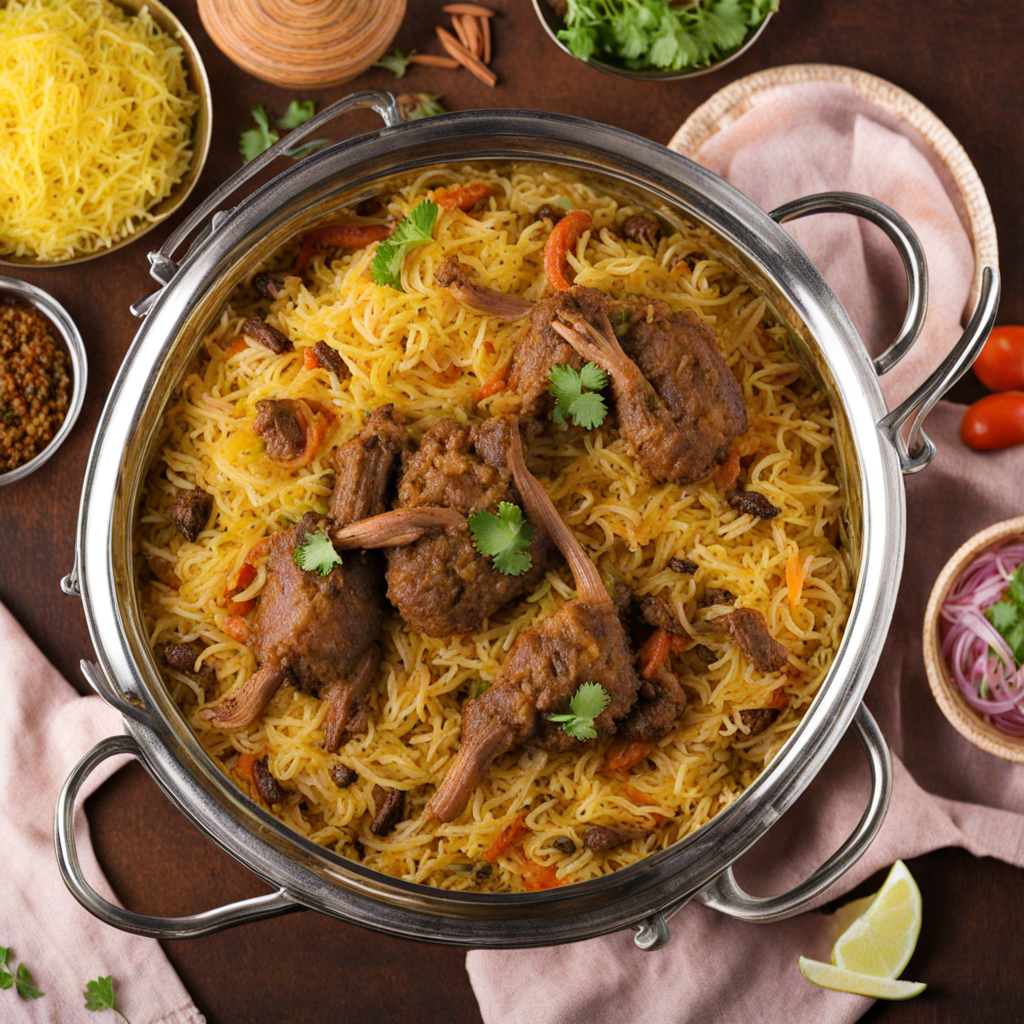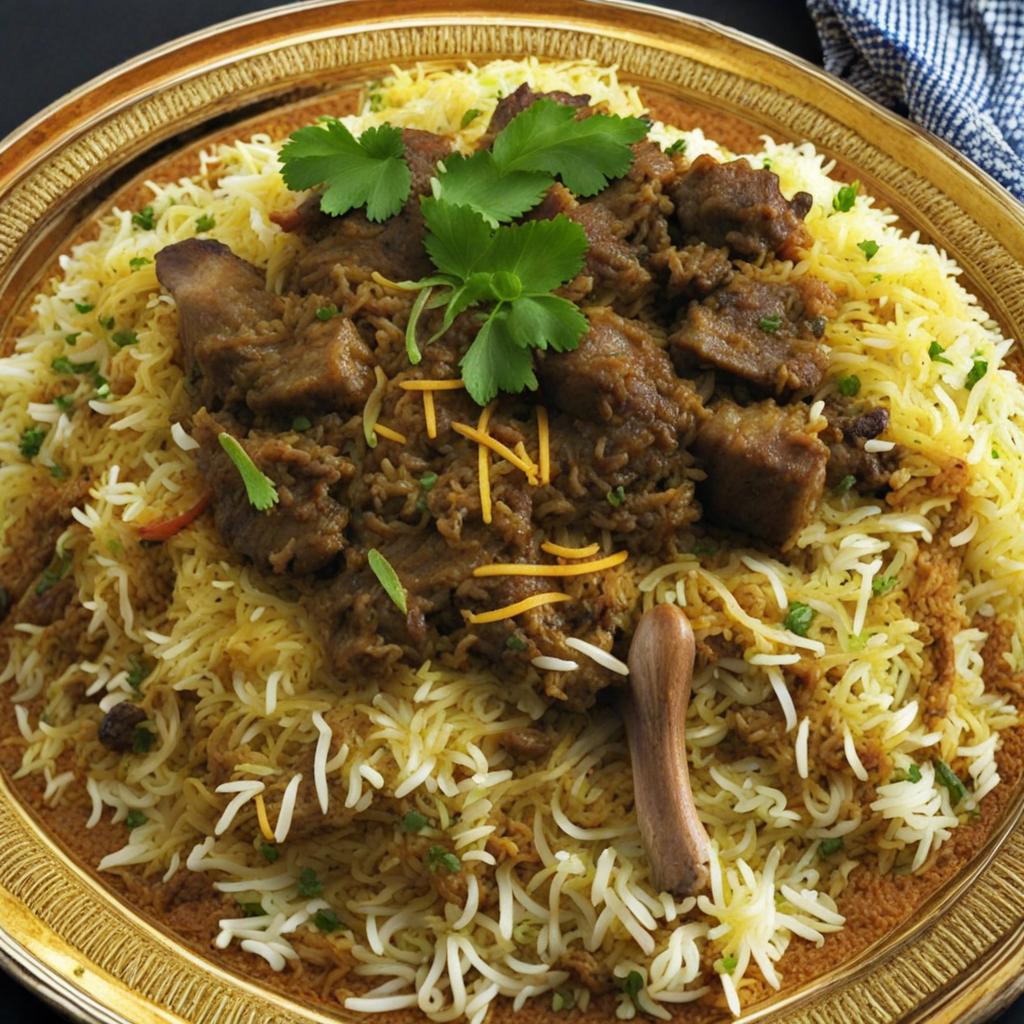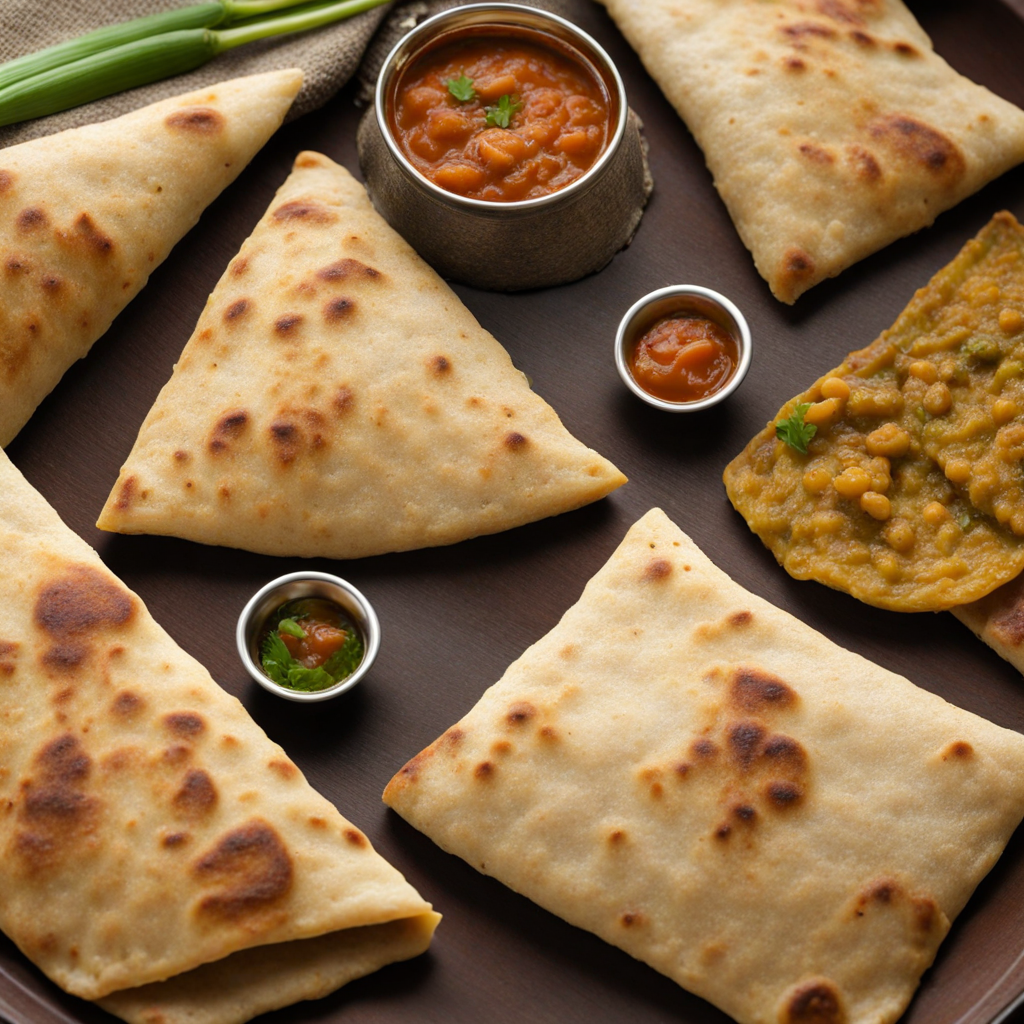Lamb Biryani
Lamb Biryani from Mauritius is a fragrant and flavorful dish that beautifully showcases the island's rich culinary heritage. This dish combines the aromatic spices of Indian cuisine with local ingredients, resulting in a unique and satisfying meal. The lamb is marinated with a blend of spices such as cumin, coriander, and garam masala, allowing the meat to absorb all the rich flavors before being slow-cooked to perfection. The tender lamb is then layered with long-grain basmati rice, which absorbs the savory juices and spices, creating a delightful contrast of textures and tastes. The rice is often enhanced with caramelized onions, fresh herbs like cilantro and mint, and sometimes even saffron, which adds a luxurious touch to the dish. As the biryani is cooked, the steam infuses the rice with the aromatic spices and the essence of the lamb, resulting in a dish that is both comforting and aromatic. The gorgeous presentation, often topped with crispy onions and boiled eggs, adds to its allure, making it a feast for both the eyes and the palate. Served with cooling raita or tangy achar on the side, Lamb Biryani is not just a meal but an experience that invites you to savor each bite. The complexity of flavors — from the warmth of the spices to the richness of the lamb — creates a harmonious balance that is both indulgent and satisfying. Whether enjoyed at a family gathering or in a casual setting, this dish embodies the spirit of Mauritian cuisine, where diverse influences come together to create something truly special.
How It Became This Dish
The Flavorful Journey of Biryani Agneau in Mauritius #### Origins of Biryani The history of Biryani Agneau, or lamb biryani, in Mauritius is a delicious tapestry woven from various cultural and culinary traditions. Biryani itself has its roots in the Indian subcontinent, believed to have originated from Persian influences brought to India by the Mughals in the 16th century. The dish, which combines aromatic basmati rice with marinated meat, spices, and sometimes vegetables, has evolved into numerous regional variations across South Asia and beyond. In Mauritius, biryani was introduced by Indian indentured laborers who arrived on the island in the 19th century. These laborers were primarily from the Indian states of Bihar and Uttar Pradesh, and they brought with them their culinary traditions, including the art of making biryani. However, the Mauritian version of biryani has undergone significant transformation, influenced by local ingredients, cooking methods, and the multicultural society of the island. #### Cultural Significance Biryani Agneau holds a special place in the hearts and homes of Mauritians, transcending mere sustenance to become a symbol of celebration, community, and identity. The dish is often associated with important festivities, family gatherings, and communal meals, particularly during religious occasions and weddings. Unlike its Indian counterparts, which may be prepared as a daily meal, biryani in Mauritius is reserved for special occasions, thus elevating its status. The multicultural fabric of Mauritius, which consists of Creole, Indian, Chinese, and French influences, is reflected in the preparation and consumption of biryani. The blend of spices and techniques showcases the island's culinary diversity, making it not just a dish but a representation of Mauritian heritage. As a result, biryani has become a point of pride for the Mauritian people, serving as a reminder of their shared history and the blending of cultures. #### Ingredients and Preparation Biryani Agneau is characterized by its unique combination of flavors, where tender lamb is marinated in a rich mix of spices, including cumin, coriander, cardamom, cloves, and bay leaves. The use of saffron or turmeric gives the rice its iconic golden hue, while fried onions and boiled eggs often serve as garnishes, adding complexity to the dish. The preparation of biryani in Mauritius often involves layering. The marinated lamb is usually cooked with partially boiled rice, and the two are layered in a pot, creating a fragrant and flavorful dish that is slow-cooked to allow the flavors to meld. This method, known as "dum," is vital to achieving the desired texture and taste. One notable aspect of Mauritian biryani is the use of local ingredients, such as fresh herbs, coconut milk, and sometimes even seasonal vegetables. This incorporation of local produce not only enhances the flavor profile but also signifies the adaptability of the dish to the island’s agricultural bounty. #### Evolution Over Time As Mauritius continued to develop throughout the 20th century, so too did its culinary landscape. The post-independence era saw a resurgence of interest in local cuisine, with biryani gaining prominence as one of the quintessential dishes of Mauritian identity. Restaurants began offering their own interpretations and variations, catering to both locals and tourists seeking an authentic taste of the island. In the 21st century, biryani has undergone further reinterpretation, with innovative chefs experimenting with ingredients to create fusion versions. For instance, some have incorporated seafood or even vegetarian substitutes, reflecting the growing demand for inclusive and diverse culinary options. This evolution has not diminished the traditional recipe but rather enriched the biryani experience, allowing it to remain relevant in contemporary Mauritian society. Moreover, the popularity of biryani has led to the establishment of festivals and competitions dedicated to the dish, where chefs showcase their skills and creativity. Such events not only celebrate the culinary heritage of Mauritius but also foster community spirit and camaraderie among food lovers. #### Global Recognition The global appreciation for biryani, in all its forms, has also impacted the Mauritian version. With the rise of culinary tourism, tourists flocking to the island are eager to explore its vibrant food scene, leading to an increased interest in traditional dishes like Biryani Agneau. Additionally, the accessibility of international food media, including cooking shows and social media platforms, has allowed Mauritian chefs to share their unique take on biryani with a wider audience. The dish's international recognition is a testament to its universal appeal. The aromatic spices and comforting nature of biryani resonate with people across cultures, creating connections through food that transcend boundaries. In this sense, Biryani Agneau is not only a local delicacy but also a global ambassador of Mauritian cuisine. #### Conclusion Biryani Agneau is more than just a flavorful dish; it is a narrative of Mauritius itself—rich in history, culture, and communal spirit. From its origins with Indian indentured laborers to its current status as a culinary icon, biryani has evolved into a cherished part of Mauritian identity. It stands as a testament to the resilience and adaptability of culture, reflecting the diverse influences that shape the island's culinary landscape. As Mauritius continues to grow and change, so too will Biryani Agneau, embracing new influences while retaining the essence of its heritage. Each plate of biryani tells a story, connecting generations and celebrating the vibrant culture of this beautiful island nation. Whether served at a festive gathering or enjoyed in the comfort of one's home, Biryani Agneau remains a beloved dish that encapsulates the spirit of Mauritius, inviting all to partake in its rich and flavorful history.
You may like
Discover local flavors from Mauritius







